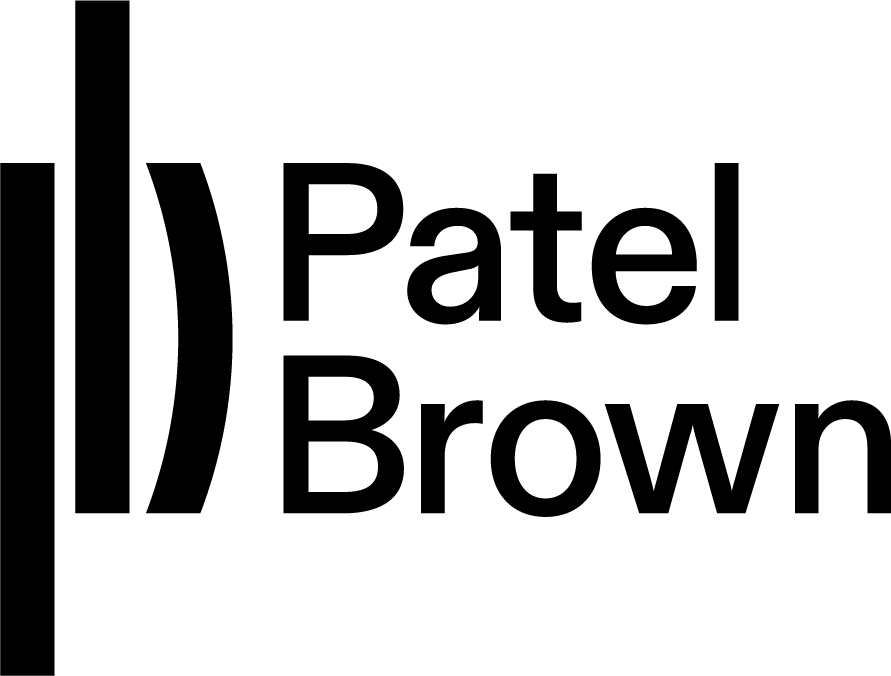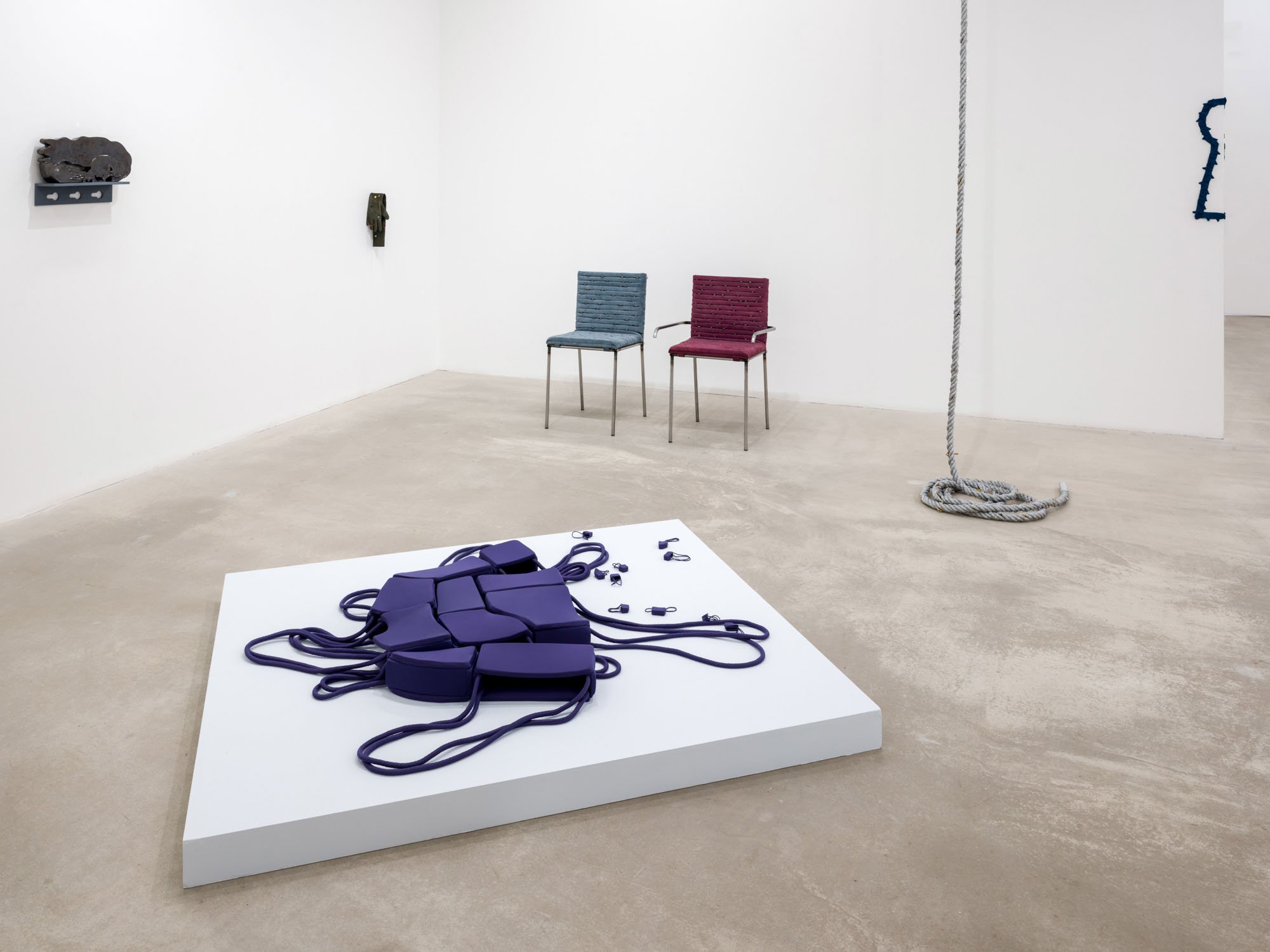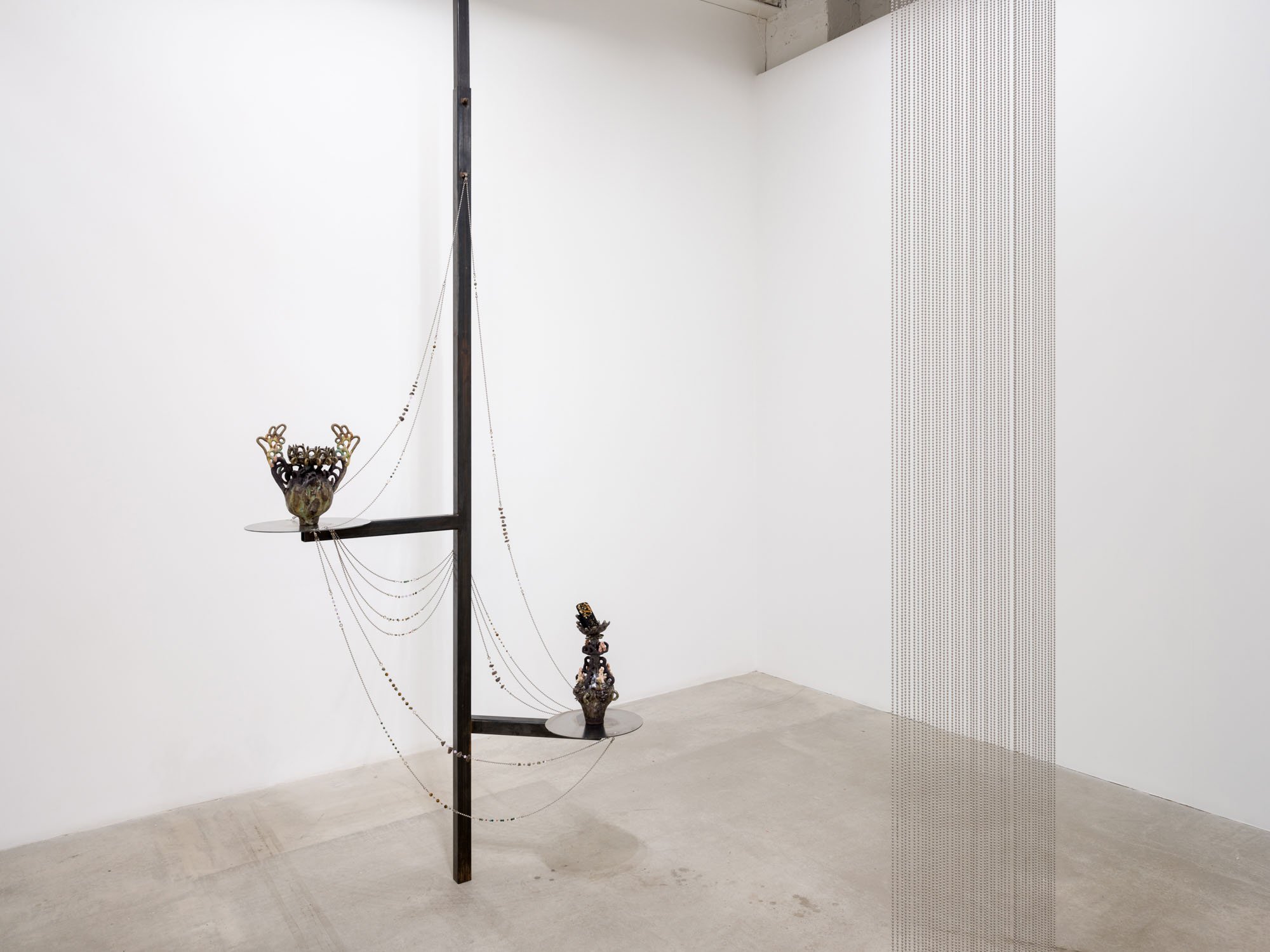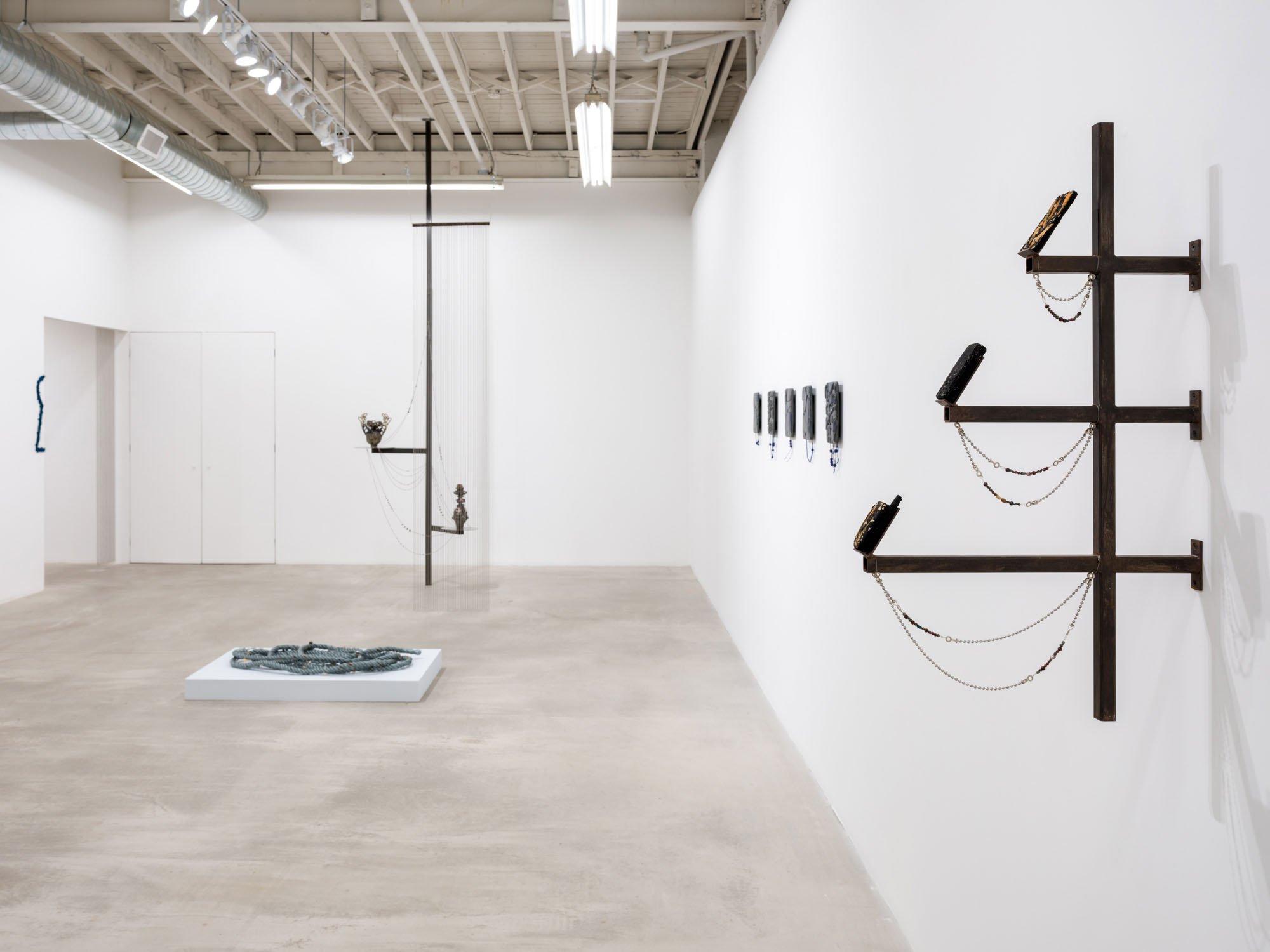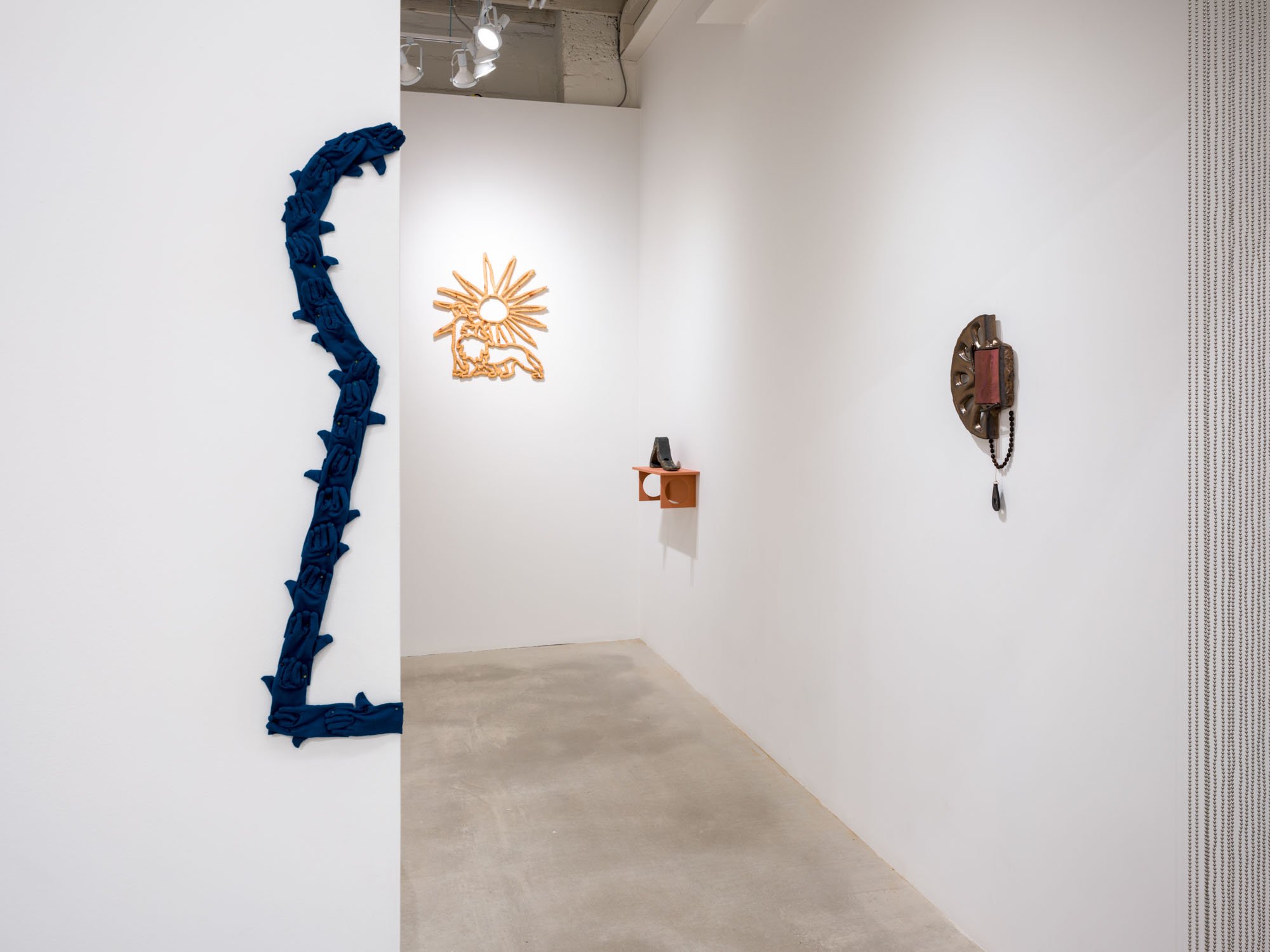21 WADE AVE #2 | TORONTO
Kyle Alden Martens, Dominique Sirois & Shanie Tomassini | Personal Allegories
14 JAN - 18 FEB 2023
We use allegories to make sense of universal concepts and personal matters, natural phenomena and everyday life. The artists featured in this exhibition use sculpture, performance and display to create forms of allegory, from the political to the intimate. They employ representation of the human form and references to the body to create narratives in which undercurrents of feminism, queerness, eco-anxiety and identity are palpable. While each of the artists have distinct stories to tell, this exhibition weaves together intersecting elements to bring forward new allegories infused with contemporary ideologies.
For Shanie Tomassini, symbols and rituals are extracted from everyday experiences and become a compass for her work and questions that emerge from it. Picked from a tarot deck, a specific card and its meaning translates into an idea, a concept, a path on which to reflect during the time-intensive wood carving of said figure. In the same way, an architectural detail, an animal or any other element that the artist might notice during a walk, could be interpreted as a card that the wind blew across her path and for which she should pay attention to its meaning. These symbols become placeholders for specific periods of her life. Ideas of transformation, cycles, regeneration and sustainability are also extracted from these symbols and are key to Tomassini’s practice. The vulture, for instance, a bird the artist came across numerous times, might be perceived as foul by many, for its necrophagous eating habits and general appearance, but plays an important role in cleaning the ecosystem and incarnates the idea of nature’s life and death cycles eloquently. Taking the form of a vase or pedestal in Turkey Vulture Chalice, the vulture is made of ceramic, another cycle of transformation in itself and, like additional vessels in the exhibition, can be used to hold replicas of mobile phones that the artist cast in incense. The incense-phones are metaphors for new rituals and talismans that are offered by technology: precious objects we protect; hold in pockets close to our hearts and against our faces; use to connect with loved ones; and fill with deep meaning and value. They can be burned, evoking ephemeral, intangible qualities that the virtual can possess, and the transformative powers it can bring to us. At the same time, the potential burning of the phones equates to a possible liberation of the hold these devices can have on us and a yearning for spiritual reconnection.
The interrogation of technology, transformation and sustainability from an ecofeminist lens is shared by Dominique Sirois and is the foundation of the myths she revisits in her work. In Tablette (cobalt) series, she uses cobalt oxides to glaze ceramic replicas of tablets as a way to reflect upon the minerals that are extracted from mines in Congo to sustain the global quest for mobile technology. 1 Metals and their transformation are also central in Sirois’ Yoga ceramics and Figures du nomadisme. Alluding to women’s bodies as a site for struggle and resistance in the face of their merchandising and sexualization, the works suggest the female power of metamorphosis (la femme chenille aka caterpillar-woman) and resilience, their energy and conductivity like the properties of their metallic glazing. The environmental and social impact of capitalistic ways of living are reflected in La femme de Nîmes series. In these sculptures of lower-body jean-wearing female figures, the artist re-actualizes the greek myth of Danae to address the link between the economy and the (hyper)sexualization of women’s bodies. Created in 18th century Nîmes (France), hence the shortened name ‘denim’ (de Nîmes = of Nîmes), the fabric was originally made for the working class (miners, mechanics, farmers, etc.). This changed in the 1960s when denim was appropriated by youth, becoming a symbol of rebellion, counterculture, gender equality and sexual liberation, and in the 1990s, of protest against sexual violence and victim blaming. This commodity and what it represents, comes with an environmental price that its manufacturing has left on now deeply polluted waters of a city like Xintang (China), ‘the denim capital of the world’. In Sirois’ work, garments become a space for multi-layered meaning and a symbol for transmuting identities.
Reflection on the body and clothing as a place of negotiation of one’s identity resonates throughout Kyle Alden Martens’ art practice. Here, garments and wearable accessories are used as allegories for queerness that can be revealed or concealed to others. Outward visual statements and status symbols on their own, purses can also hide their content. In Alden Martens’ Purse Shirt and Purse Shirt Miniature, each artist-made purse is part of a larger grouping, evoking community and belonging, even in concealment. His work often conveys a sense of touch and pressure, between caring and holding back. Stone marbles are nested in belts, preventing them from being handled, but also protecting them from being broken. In Glove (1), Alden Martens plays with size, embedding smaller (glass) marbles into a leather glove, resulting in an accessory meant to hide a hand in an embellished casing, while making touch (or connection) impractical. Held by even smaller glass spheres in Glove Keyhole, gloves are shrunk to a ‘cute’ size and multiplied to form a keyhole: a locked shape pointing to something both closed and open. Keys to locks are used to adorn a climbing rope in Blue Silk Rope, making it treacherous to use. The rope itself is painstakingly wrapped in silk, queering its athletic function. Alden Martens’ works call upon the body in a performative way, whether they need to be activated by the artist or not. Jewellery Box and Jewellery Box with Arms encapsulate the essence of these ideas: mood-rings embedded in upholstered leather chairs suggest a sense of ever-shifting community that sways together, reflecting or reading the room’s energy. It also calls out to the body, that could leave its temporary trace on the emotion-sensitive jewellery. Fluctuating sizes, functions and desires are metaphors for the transformative power, and sometimes pressure or burden to transform, of the queer body that are brought to light in these soft yet rebellious sculptures.
Symbolically charged, these layered art practices reveal complexities of living in today's world, where all is polarized, shifting in nature and everything in between. In the same way, these allegories do not have one hidden meaning but are manifold, ever-expanding, mirroring human nature.
1. Cobalt is an essential component of lithium-ion batteries.
2. Danae became impregnated by Zeus who took the form of a shower of gold falling onto her naked body.
3. Denim Day is a campaign in honor of Sexual Assault Awareness Month. It began after a ruling by the Italian Supreme Court where a rape conviction was overturned because the justices felt that since the victim was wearing tight jeans she must have helped the person who raped her remove her jeans, thereby implying consent.
- Roxanne Arsenault in collaboration with Jennifer Simaitis
Kyle Alden Martens is an interdisciplinary artist based in Montréal. He graduated from the Nova Scotia College of Art and Design University in 2015 with a BFA in Intermedia. He is a recent MFA graduate in sculpture at Concordia University and were supported by the Dale and Nick Tedeschi Arts Fellowship, the Joseph-Armand Bombardier Canada Graduate Scholarship (SSHRC), and the Fonds de Recherche du Québec - Société et culture (FRQSC).
Throughout Martens practice whispers of touch and tension are hinted at in referential forms like gloves, marbles, knots, and reflexology diagrams. Clothing serves as an allusion, throughout his practice, to fitting and fitting in. In some cases, objects nest perfectly into places designed with care and attention to accommodate them. In others, fitting is more theoretical, calling into question how queer bodies take up space. Each series presents a cohort of friendly and fetishized objects, installations, performances, and videos—seductive yet unruly, softly rebellious.
Among others, Martens has exhibited with Circa Art Actuel, Leonard & Bina Ellen Art Gallery and Pangée in Montréal, AXENÉO7 in Gatineau, as well as the Khyber Centre for the Arts in Halifax. His exhibition PORTABLE CLOSETS, has been shown nationally at Stride Gallery, Centre CLARK, and Eastern Edge Gallery. His practice is currently supported by a Canada Council for the Arts creation grant where he is investigating sites of storage to find alternative metaphors for the proverbial closet.
Dominique Sirois lives and works in Montreal. Her practice takes the form of multidisciplinary installations and are composed of complex displays presenting ceramics, sculptures and assemblages. Sirois works and spaces innterogate themes such as capitalist economy, sexuality, spirituality and technology. Her work has been exhibited at artist-run centres across Canada such as Clark, AXENÉO7 and Latitude 53. She has participated in international residencies in Glasgow, Paris, Shanghai, Taiwan, Barcelona and Banff. Sirois’s work has been shown in group shows at Fondation Phi and Gallery of UQAM (Montreal), The Ludwig Museum (Budapest), Le Commun (Geneva), Taipei MOCA and Unicorn Center for Arts (Beijing).
Shanie Tomassini is a sculptress and her work explores the cyclical and renewable potential of objects, sites and ideas. Evoking sustainability, craftsmanship and ecofeminism, her work hints at the sacred emerging from the mundane. She examines the nature of a material, reflecting on its evolution across space and time. Tomassini completed an MFA in sculpture from the University of Texas at Austin in 2019. She presented several solo exhibitions at Clark Center (Montreal), at the UMLAUF Museum (Austin), and at CIRCA art actuel (Montreal). Her work was also shown at Arsenal Contemporary (New York), at the Tenerife Espacio de las Artes (Spain), and at Artpace (San Antonio). In the last year, she was a resident artist at Est-Nord-Est Center (Saint-Jean-Port-Joli) and at Rad’Art Project in San Romano (Italy).
Roxanne Arsenault is the director of Patel Brown Montreal.
Jennifer Simaitis is the director of Patel Brown Toronto.
